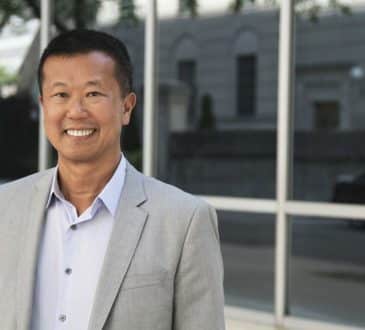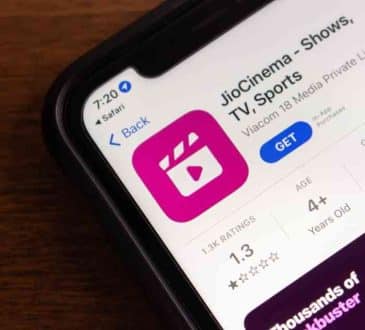Why We Must Move Beyond Performance as a Top Criterion for Determining Leadership Potential

It takes a special person to be a leader. Yet, when we look around today, we’re surrounded by inept, self-focused, under-skilled people in leadership roles. It appears we have a mismatch between people who hold leadership positions and the type of people needed for these roles.
A bad leader has an enormous negative impact on the financial, strategic, and team engagement aspects of an organization. Estimates indicate that a bad leader costs an organization upwards of $3 million. We’re suffering from a leadership crisis and one root cause is the lack of effectiveness in determining leadership potential.
One of the key responsibilities of organizational leaders is to identify and cultivate potential leaders. But many leaders themselves are ill equipped — or simply overcome — when it comes to navigating the talent game. Frankly, many leaders aren’t competent at selecting high-potential leaders. In fact, in a recent global study that we conducted, we asked CEOs of major organizations worldwide what constituted the biggest challenges to this work. They pointed right back to themselves.
Our research also found that many leaders aren’t thinking about determining leadership potential at all, and if they are, their process isn’t fleshed out. When leaders in our research studies shared a plethora of criteria they use to determine leadership potential — and thereby substantiated how much variation exists in the thinking on this subject — an employee’s performance was named as a top indicator. This is concerning.
Performance is not an indicator of potential for leadership — unless the jobs and work are quite similar. For example, we shouldn’t try to make roadies into rock stars if they don’t have the raw ingredients needed. The problem with selecting people who have deep functional expertise is that it often doesn’t translate into great leadership. If performance is often what catches to eye of senior leaders, they need to consider it only as the quality that brings that person’s name into a leadership conversation, but not in itself worthy of promotion to a leadership role.
A person’s intelligence, personality, motivation, and learning agility better serve as meaningful criteria for determining high-potential candidates.
Following is a brief explanation of how to uncover these foundational traits needed in high-potential leaders:
- Identify the intelligence level in potential leaders.
Intelligence is fixed and things only become more complex as leaders ascend in organizations, which is why this is one of the four critical lenses for assessing potential. To accurately determine intelligence, be rigorous and demanding of people. Make them justify their thinking and points of view so that you can watch their thought process. Intelligence isn’t just about “street smarts,” but about analytical skills and working with complex ideas. Additionally, test their critical thinking using assessments. (Wonderlic is a good resource.) - Look (and lookout) for certain personality traits.
Personality can help predict the effectiveness of one’s ability to manage, build relationships, and respect others. While potential leaders’ personalities need not fit a type, such as an extrovert, they must not exhibit any polarizing and derailing behaviors. Leaders, after all, need followers, and if they possess any toxic personality traits — such as extreme introversion, negativity, or narcissism —they will create a hostile work environment. Again, using an assessment tool is helpful. Examples are 360-degree instruments, DiSC, and Hogan. - Consider motivation a must.
When people are motivated, they’re self-starters, go above and beyond, and fully commit to bringing their best selves. They have their own intrinsic engines that propel them to give their full effort and don’t need a push from an external force. What’s more, highly motivated people proactively undertake pursuits that improve their skills. It’s critical that we select for this because we’re not able to control others’ motivation — they do. An additional challenge is that organizational leaders may mistake enthusiasm for motivation. Metrics for determining motivation can include proactiveness, persistence, effort, focus, resilience, and commitment. - Recognize the correlation between learning agility and positive organizational impact.
The world of work is continuously in flux. Look at what happened to organizations during the 2020 pandemic. Many businesses’ models changed completely and immediately. If one doesn’t have high learning agility, the rest doesn’t matter. Learning agility is a visceral commitment to the ongoing acquisition of new knowledge and skills. These people gravitate to new challenges and enjoy complex problem solving. They typically outperform peers, learn new information quickly, are adaptable, and have a strong degree of self-awareness. Not only are they high-potential leaders, but they create a positive impact on the organization through their ongoing commitment to excellence. When assessing people for learning agility, focus less on their advanced degrees and more on whether they continually seek and absorb information.
We need leaders with intellectual firepower and capable cognitive skills to solve today’s challenges. Intelligence, personality, motivation, and learning agility should be considered the secret sauce of high-potential leaders.
————
Written by Dr. Kimberly Janson and Dr. Melody Rawlings.
Have you read?
Best Business Schools In The World For 2022.
Best Fashion Schools In The World For 2022.
Best Hospitality And Hotel Management Schools In The World For 2022.
Best Medical Schools In The World For 2022.
The World’s Best Universities For Doctor of Business Administration (DBA), 2022.
Add CEOWORLD magazine to your Google News feed.
Follow CEOWORLD magazine headlines on: Google News, LinkedIn, Twitter, and Facebook.
This report/news/ranking/statistics has been prepared only for general guidance on matters of interest and does not constitute professional advice. You should not act upon the information contained in this publication without obtaining specific professional advice. No representation or warranty (express or implied) is given as to the accuracy or completeness of the information contained in this publication, and, to the extent permitted by law, CEOWORLD magazine does not accept or assume any liability, responsibility or duty of care for any consequences of you or anyone else acting, or refraining to act, in reliance on the information contained in this publication or for any decision based on it.
Copyright 2024 The CEOWORLD magazine. All rights reserved. This material (and any extract from it) must not be copied, redistributed or placed on any website, without CEOWORLD magazine' prior written consent. For media queries, please contact: info@ceoworld.biz
SUBSCRIBE NEWSLETTER








